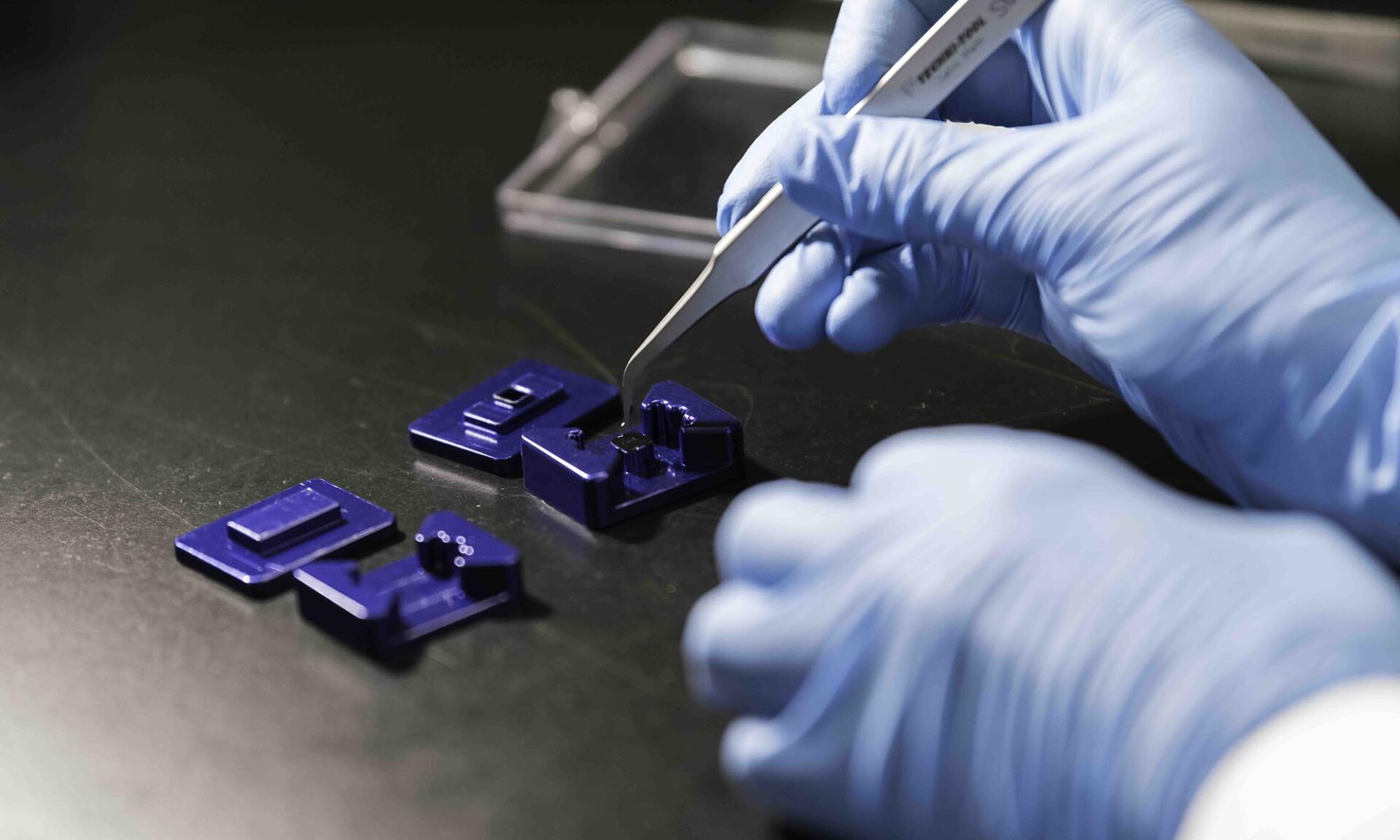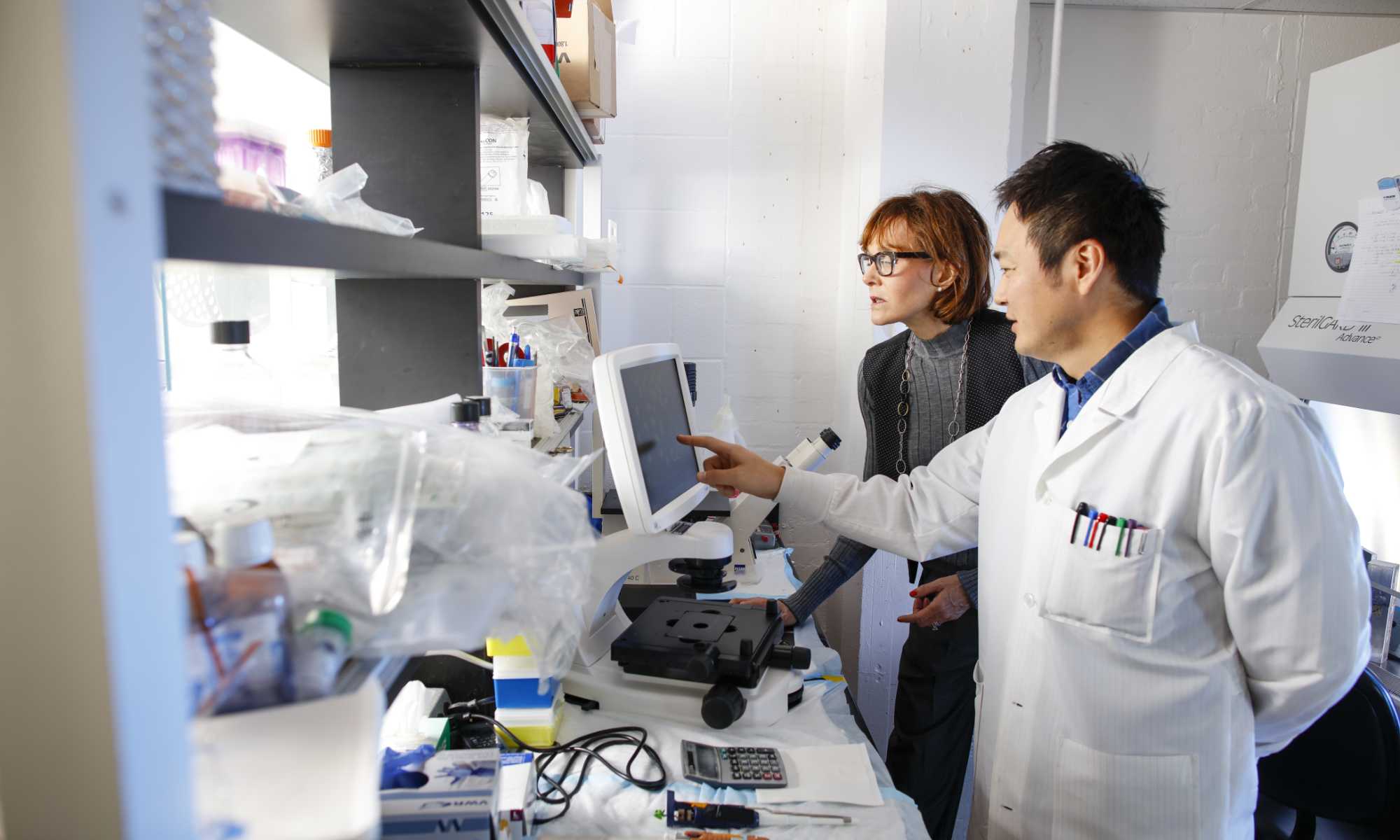Rochester’s Center for Emerging and Innovative Sciences drives research commercialization in key technology fields, from photonics to life sciences.
A longstanding partnership between the University of Rochester’s Center for Emerging and Innovative Sciences (CEIS) and New York has been renewed for another 10 years, reinforcing a joint commitment to expand the New York State economy through university-industry collaboration.
CEIS is one of 15 Centers for Advanced Technology (CATs) designated by the Division of Science, Technology, and Innovation (NYSTAR) of Empire State Development (ESD). CATs are competitively selected for their ability to drive research commercialization and strengthen New York’s position in strategically important technology fields.
The renewed designation comes with $1 million in annual state funding, which CEIS uses to support industry-sponsored research in optics, photonics, and imaging—sectors in which the Finger Lakes region is a recognized global leader—as well as in other sectors important to the New York State economy such as integrated electronics, communications, and life sciences.
“We’re extremely grateful to New York State for its continued support of CEIS and to our state delegation in Albany who continue to advocate its funding,” says Mark Bocko, CEIS director and a professor of electrical and computer engineering at the University of Rochester. “CEIS and the CAT program play a vital role in Governor Hochul’s economic development vision that focuses on innovation in strategic industries, such as semiconductors and artificial intelligence (AI), and builds on our regional assets, including the New York State Center of Excellence in Data Science and Artificial Intelligence, the University’s Laboratory for Laser Energetics, and AIM Photonics.”
State legislators praised the renewed partnership for its role in strengthening New York’s innovation economy and supporting workforce development.
“Our Centers for Advanced Technologies and Centers of Excellence continue to be one of the state’s top-performing economic development programs, driving entrepreneurship, attracting and training qualified workforces, and enabling New York to remain competitive in transformative industries,” says Assemblymember Harry Bronson. “CEIS has been instrumental in advancing next-generation technologies while producing significant economic impact—helping New York businesses innovate, expand, and create good-paying jobs.”
Senator Jeremy Cooney also emphasized the regional and statewide benefits of CEIS’s collaborative approach to research and development.
“This renewal is a recognition of the transformational impact CEIS has had in cementing Rochester, the Finger Lakes region, and all of New York State as a leader in the optics and imaging industries,” Cooney says. “Bringing together businesses and academia to collaborate is a proven model for success and is key to advancing our state’s economic priorities.”
Hope Knight, the ESD president and commissioner, called the Centers for Advanced Technology vital to growing the state’s economy and innovation ecosystem.
“By investing in the industries of tomorrow, New Yorkers benefit today through dynamic partnerships that help to create new jobs, generate more revenues, and encourage more companies to establish a footprint in communities all throughout the state,” Knight says.
A decade of economic impact
In the last decade, CEIS has helped create more than 270 new jobs and generate more than $537 million in economic impact. The center does this by using its funding to provide matching grants to university researchers—at the University of Rochester and the Rochester Institute of Technology—working on projects sponsored by private industry partners.
“The CAT program has been an engine for growth, connecting world-class university researchers with forward-looking companies,” says Paul Ballentine, director of the CEIS Intelligent Imaging Initiative. “With this renewed investment, we’ll continue to strengthen the Rochester region’s leadership in fields that are critical to everything from healthcare and defense to telecommunications and consumer electronics.”
One of those companies, Clerio Vision, has leveraged CEIS support to accelerate development and attract investment. “Since Clerio Vision’s inception, CEIS has been more than a funding source—it has been a strategic partner that helped us turn university science into a commercial platform, attracting major corporate collaborators and multiple venture capital rounds,” says Mike Totterman, who chairs the board a Clerio Vision. “Their matching grants minimized the risk of early research and development and kept high-value jobs, labs, and manufacturing right here in New York. We would not be on the cusp of bringing disruptive vision correction technology to market without CEIS.”
Another long-time collaborator, SiMPore, credits the center with helping bring breakthrough technologies to life.
“CEIS has been an indispensable partner in growing our technology in partnership with SiMPore,” says company cofounder and University of Rochester biomedical engineering professor James McGrath. “Thanks to the boost CEIS has provided through the years, we’ve been able to consistently implement one idea while forging the next.”
CEIS supports a diverse portfolio of research collaborations in ophthalmic and vision science, fiber optic communications, biomedical imaging, geospatial imaging, precision optics, consumer imaging and display technologies, microelectronics, radio frequency communications, and sensors.
As the region continues to attract attention as a hub for advanced manufacturing and innovation across multiple sectors, the renewed CEIS-NYSTAR partnership plays a key role in ensuring New York remains at the forefront of emerging technologies.





